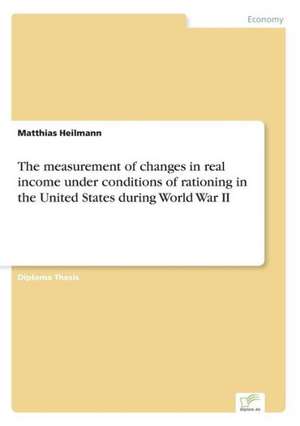The Measurement of Changes in Real Income Under Conditions of Rationing in the United States During World War II: Yusuf Has Hacib
Autor Matthias Heilmannen Limba Engleză Paperback – 20 sep 2003
Preț: 499.28 lei
Preț vechi: 616.39 lei
-19% Nou
Puncte Express: 749
Preț estimativ în valută:
95.54€ • 100.00$ • 79.52£
95.54€ • 100.00$ • 79.52£
Carte disponibilă
Livrare economică 10-24 martie
Preluare comenzi: 021 569.72.76
Specificații
ISBN-13: 9783838672212
ISBN-10: 3838672216
Pagini: 64
Dimensiuni: 148 x 210 x 4 mm
Greutate: 0.1 kg
Editura: diplom.de
ISBN-10: 3838672216
Pagini: 64
Dimensiuni: 148 x 210 x 4 mm
Greutate: 0.1 kg
Editura: diplom.de














